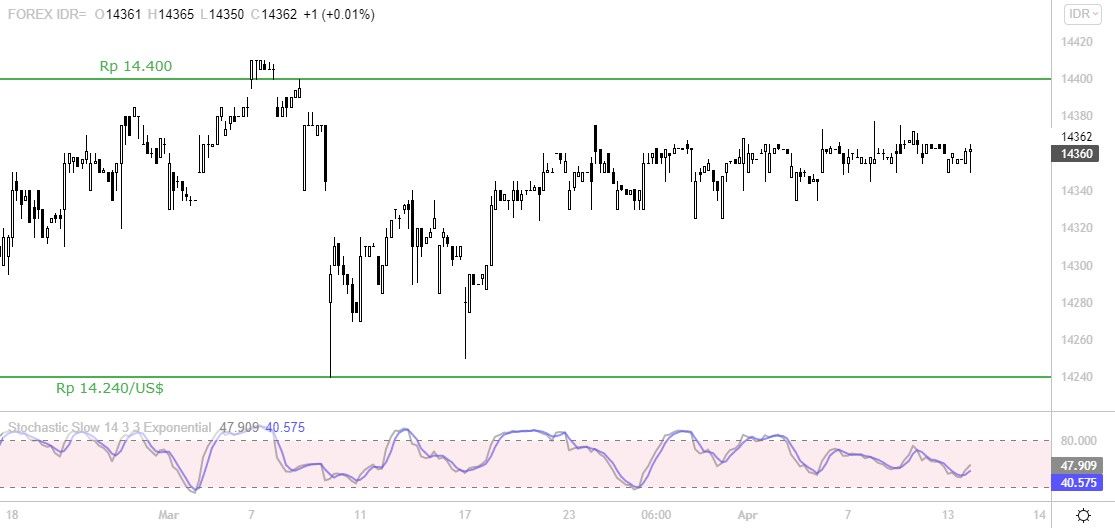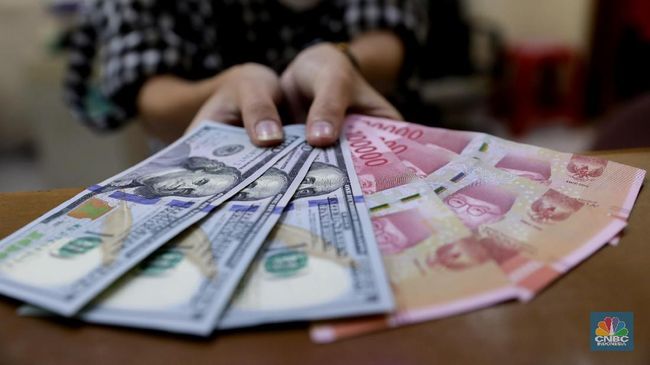Jakarta, CNBC Indonesia – The rupiah has not moved much this week, even in the last few weeks. Even though the United States (US) dollar is being supported by expectations of an aggressive interest rate hike this year, it has not been able to make the rupiah fall.
Last Wednesday, the rupiah only weakened slightly by 0.01% to Rp 14,362/US$, and in today’s trading Thursday (14/4/2022) the movement of the rupiah will still be slight again.
Although the US central bank (The Fed) will aggressively raise interest rates this year, it does not necessarily make market players buy up US dollars. In fact, the US dollar has actually been “thrown away”, as seen from the speculative position which has fallen drastically.
Commodity Futures Trading Commission (CFTC) data released last Friday showed that in the week ending April 5, net long positions (net long) the US dollar decreased by almost US$ 2 billion to US$ 14.13 billion.
The decline was the first after rising for 5 weeks.
The speculative position is the US dollar against the Japanese yen, euro, pound sterling, franc, Canadian dollar and Australian dollar.
The reduced speculative position is an indication that although the Fed will be aggressive in raising interest rates, some market participants see the US dollar will not strengthen too far.
If net long the US dollar declined, the rupiah’s speculative position reversed from selling to buying. This can be seen from the bi-weekly survey conducted Reuters.
The survey uses a scale of -3 to 3, a negative number means market participants are taking long positions (long) Asian currencies and sell (short) US dollars. The closer to -3 means position long which is taken getting bigger.
While a positive number means that the Asian currency is short and the US dollar is long, and the closer it is to the number 3, the greater the short position of the Asian currency.
The latest survey released today Thursday (7/4/2022) shows the figure for the rupiah -0.04 improved from 0.04 two weeks ago. Rupiah began to be “loved” again.
With the speculators back long against rupiah and net long the US dollar decreases, Garuda currency certainly has the opportunity to strengthen in the future.
Technically, there have been no changes to the levels to watch out for. The rupiah symbolized by USD/IDR is now above the 50-day moving average (Moving Average 50/MA 50) 100 and 200. The three MAs are moving horizontally, which is an indication that the rupiah is moving. sidewaysespecially since the beginning of the year forming a Rectangle pattern.
The lower limit of the Rectangle pattern is around Rp. 14,240/US$ and the upper limit is around Rp. 14,400/US$. To see where the rupiah is going in the medium term, one of these levels must be broken.
|
Chart: Daily Rupiah (USD/IDR) Photo: Refinitive- – |
Stochastic indicator on the daily chart is moving down from the territory overbought.
Stochastic is leading indicator, or indicators that initiate price movements. When Stochastic reaches the territory overbought (above 80) or oversold (below 20), then the price of an instrument has the opportunity to reverse direction.
Stochastic on the hourly chart to see the daily movement is moving up and is near the 50 level.
 Graphics: Rupiah 1 Hour Graphics: Rupiah 1 HourPhoto: Refinitive- – |
The closest resistance is around Rp. 14,370/US$, if penetrated, the rupiah risks weakening to Rp. 14,400/US$, which is the upper limit of the rectangle pattern. A consistent break above this level risks bringing the rupiah to weaken further to Rp 14,430/US$ to Rp 14,450/US$
Meanwhile, as long as it stays below resistance, the rupiah has the opportunity to strengthen to Rp. 14,340/US$ to Rp. 14,320/US$. This week, the rupiah has the opportunity to strengthen to 13,300/US$ to Rp. 14,280/US$ if it is able to penetrate consistently below Rp. 14,320/US$.
CNBC INDONESIA RESEARCH TEAM
(pap/pap)
–

